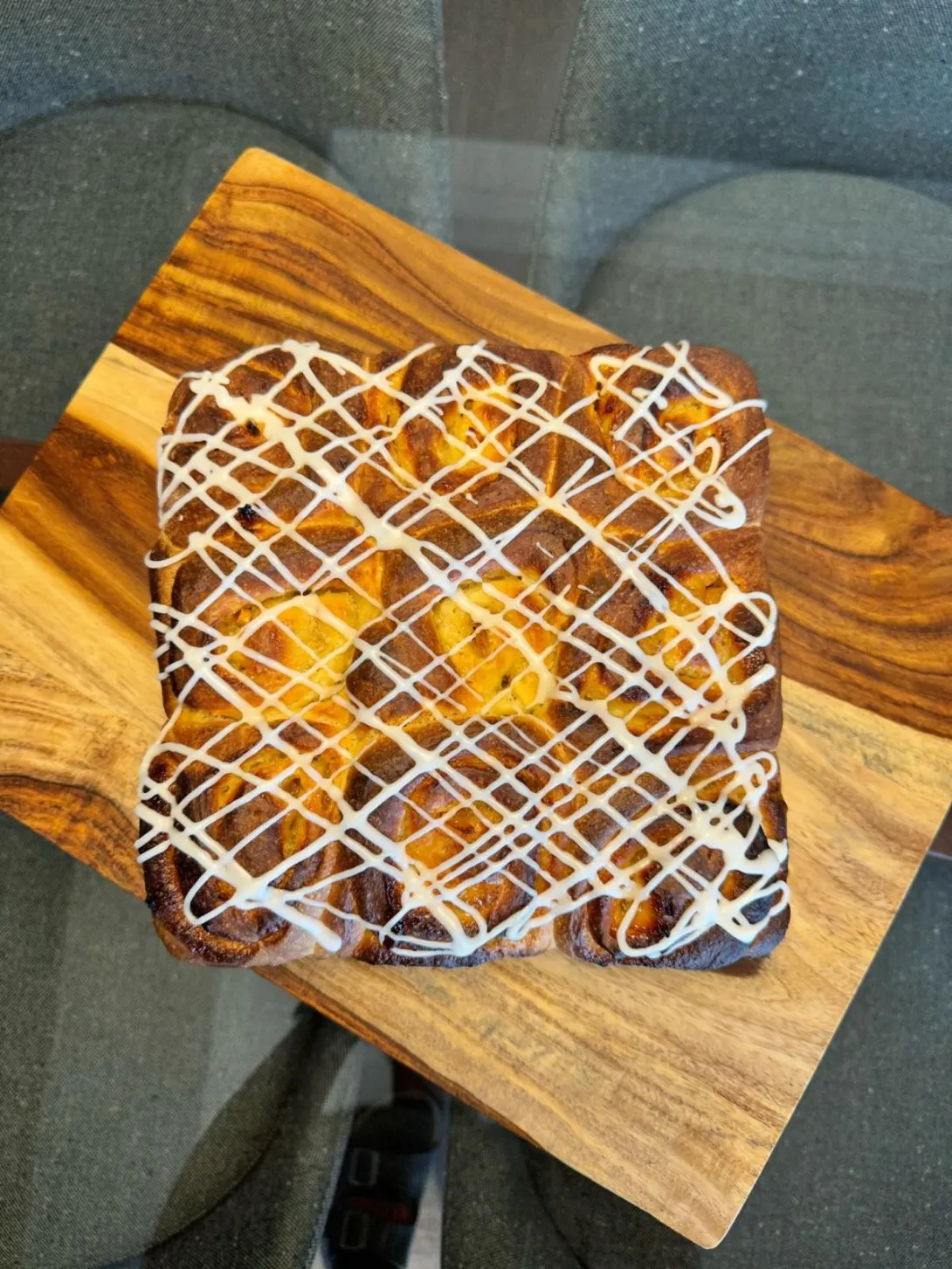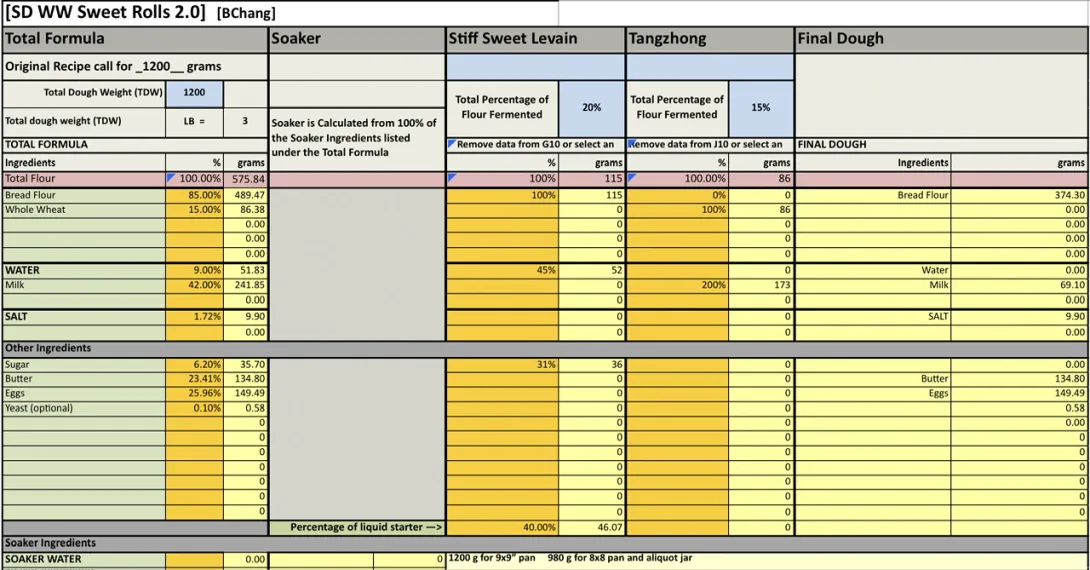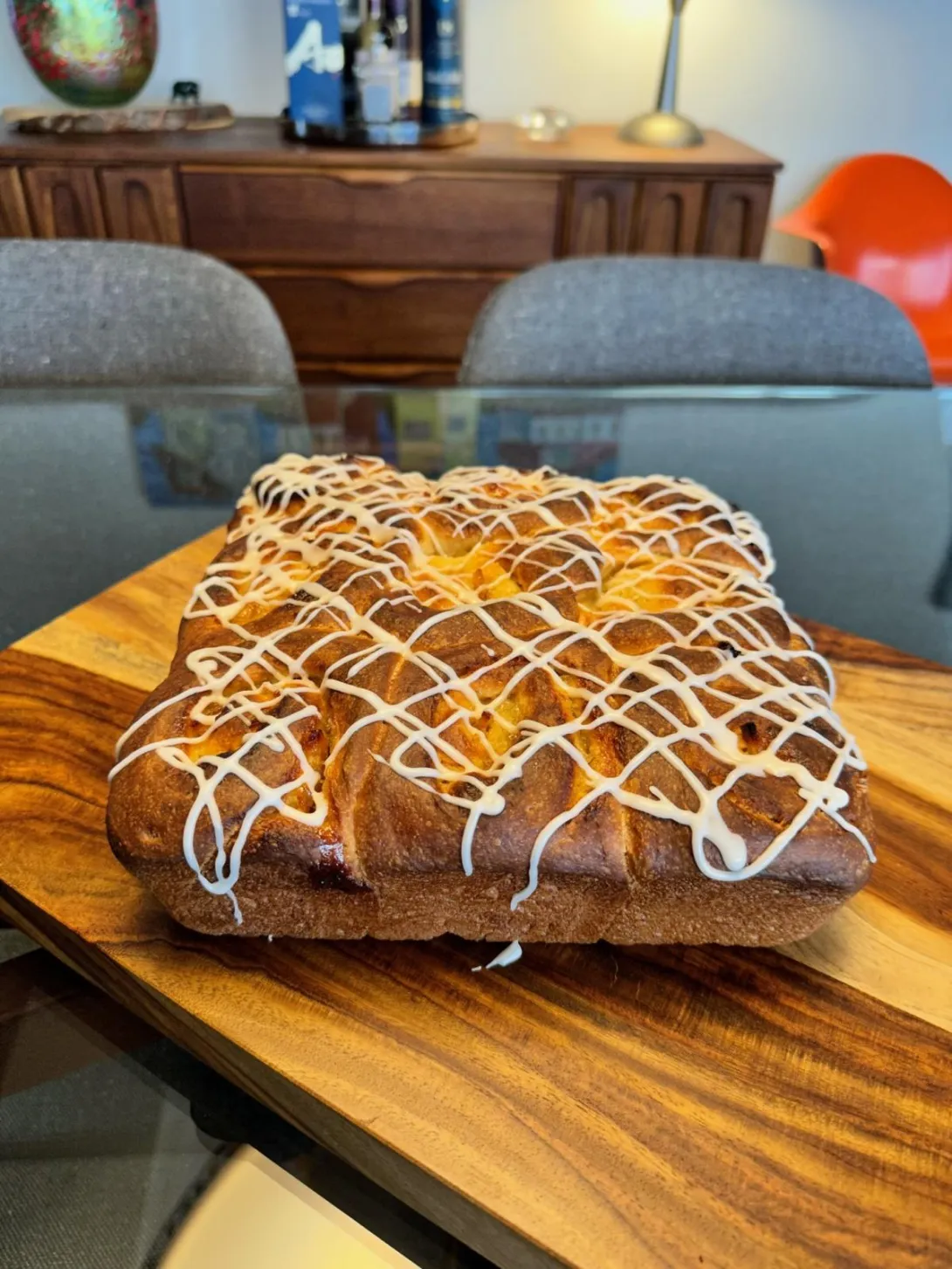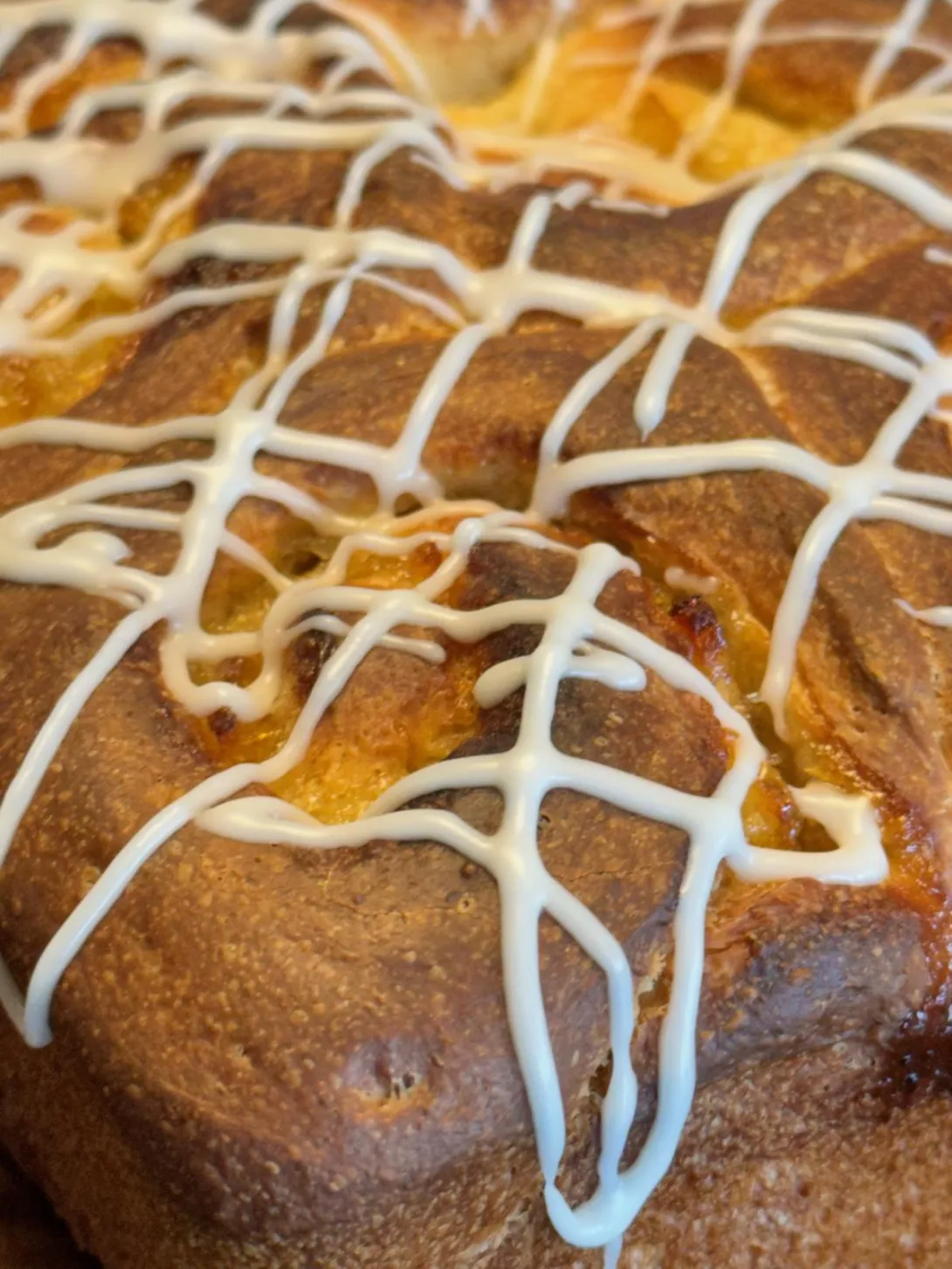I have a new jar of yuzu tea. So yuzu tea (or citron tea since it is Korean) is a marmalade like jelly made from yuzu that when mixed with boiling water makes a lovely drink. I decided I wanted to make some sweet rolls and I wanted to have yuzu flavour to it so I would use the yuzu tea as the filling and I have a bottle of yuzu extract that I would use as the liquid for the drizzle/icing. Despite the name of these rolls, they aren’t very sweet. Other than the sugar used for the stiff sweet levain, there isn’t any sugar added to the dough. Also, to make these a bit more hearty and healthy, all the flour for the tangzhong is whole wheat.
The dough is my standard formula for sweet roll dough that I have used before. One change I would make next time is to prepare more of the yuzu filling, perhaps about 25% more and to use more of the flour sprinkled on the filling, again 25% more.


Sweet Yuzu Glaze
Yuzu extract 1 tbsp
½ cup (60g) confectioners’ sugar
Make the glaze: Right before serving, top your yuzu rolls with glaze. Mix all of the glaze ingredients together. If you prefer a thicker glaze, add more powdered sugar and then add salt to cut the sweetness, if desired. If you’d like it thinner, add more yuzu extract or cream. Drizzle over sweet rolls.
Yuzu Filling
½ cup yuzu tea
1/16 cup granulated sugar
18 g flour (sprinkled on the filling after it is spread onto the dough)
Instructions
Levain
Mix the levain ingredients in a jar or pyrex container with space for at least 300% growth.
Press down with your knuckles or silicone spatula to create a uniform surface and to push out air.
At a temperature of 76ºF, it typically takes up to 10-12 hours for this sweet stiff levain to be at peak. For my starter I typically see 3-3.5 times increase in size at peak. The levain will smell sweet with only a mild tang.
Tangzhong
In a sauce pan set on medium heat, stir the milk and flour until blended. Then cook for several minutes until well thickened, stirring regularly with a spoon or heat-resistant spatula. Let cool in the pan or, for faster results, in a new bowl. Theoretically it should reach 65ºC (149ºF) but I don’t find I need to measure the temperature as the tangzhong gelatinizes at this temperature. You can prepare this the night before and refrigerate it, ensure that it is covered to prevent it from drying out.
If you plan on using a stand mixer to mix this dough, set up a Bain Marie and use your stand mixer’s bowl to prepare the tangzhong.
Dough
In the bowl of a stand mixer, add the milk (consider holding back 10 g of milk and adding later if this is the first time you’re making this), egg, tangzhong, salt, sugar and levain. Mix and then break up the levain into many smaller pieces. Next add the flours. I like to use my spatula to mix until there aren’t many dry areas. Allow the flour to hydrate (fermentolyse) for 20-30 minutes. Mix on low speed and then medium speed until moderate gluten development this may take 5-10 mins. You may want to scrape the sides of the bowl during the first 5 minutes of mixing. Next add room temperature butter one pat at a time. The dough may come apart, be patient, continue to mix until it comes together before adding in more butter. Once all the butter has been added and incorporated increase the speed gradually to medium. Mix at medium speed until the gluten is well developed, approximately 10 mins. You will want to check gluten development by windowpane during this time and stop mixing when you get a good windowpane. You should be able to pull a good windowpane, not quite as good as a white flour because the bran will interrupt the windowpane somewhat. Next add the zest of two oranges, that way they do not interfere with the gluten development. Mix until they are well incorporated in the dough.
On the counter, shape the dough into a tight ball, cover in the bowl and ferment for 2 - 3 hours at 82ºF. There may be some rise visible at this stage.
Optional cold retard overnight or just 1.5 hours to chill the dough for easier shaping.
Prepare your pan by greasing it or line with parchment paper.
This dough is very soft. Act quickly to roll, spread the filling, and cut before the dough warms and softens further. If it begins to soften, place it in the fridge to firm.
Remove your bulk fermentation container from the fridge, lightly flour your work surface in a large rectangle shape, and the top of the dough in the bowl. Then, gently scrape out the dough to the center of your floured rectangle. Lightly dust the top of the dough with flour, and using a rolling pin, roll the dough out to a 15″ x 15″ square or larger rectangle.
Brush melted butter on rolled dough. Then spread warmed yuzu tea onto the dough, then sprinkle flour on top. The flour will help absorb any water drawn out of the dough by the sugar in the yuzu tea.
Starting at one of the long sides of the rectangle in front of you, begin rolling up the dough as you move across. Be sure to tightly roll the dough by gently tugging on the dough as you roll.
Once finished rolling up the dough, divide it into nine 1 1/2″ pieces using a sharp knife or dental floss (my preference). Transfer the pieces to the prepared baking pan and cover with a large, reusable bag, place in a warm spot. I use my proofing box set to 82°F. Final proof may take 3-6 hours, be patient and wait until the dough passes the finger poke test.
Be sure to start preheating your oven about 30 minutes before you feel the rolls will be fully proofed. For me, the final warm proof time was about 3 hours at 77°F (25°C).
Bake
Preheat your oven, with a rack in the middle, to 400°F (200°C). After the warm proof, uncover your dough and gently press the tops of a few rolls. The fully proofed cardamom rolls will look very soft. The texture of the dough will be almost like a whipped mousse. Be sure to give them extra time in warm proof if necessary. If the dough needs more time to proof, cover the pan and give the dough another 15 to 30 minutes at a warm temperature and check again.
Once your oven is preheated, remove your pan from its bag, slide it into the oven, and bake for 30 to 35 minutes.
The rolls are finished baking when the tops are well-colored and the internal temperature is around 195°F (90°C). Remove the rolls from the oven and let the rolls cool for 5 to 10 minutes in the pan.
Once fully cooled drizzle the yuzu icing onto the rolls.
These are best the day they're made, and certainly fresh from the oven, but can be reheated in a warm oven a day or two after.


- Benito's Blog
- Log in or register to post comments
Super soft and yummy, but as I said earlier, more yuzu filling is needed so I spread some extra yuzu tea onto the roll while eating one.
Bennie,
Those are some beautiful looking rolls and I'm sure tasty as well. Always impressive, another fine bake.
Tony
Thank you Tony, they were quite good but they just needed a bit more of the filling which I will do next time.
Benny
I’ve never heard of yuzu tea. It certainly sounds tasty. Nice bake as always.
Best,
Ian
Thank you Ian. If you have a Korean grocery like H Mart near you, it would be easy to find yuzu tea, again it might be labeled citron tea. For those who like ginger they often have citron ginger tea. It’s nice to have in th evening when you might want something hot to drink but don’t have caffeine.
Benny
I will have to be on the lookout for it.